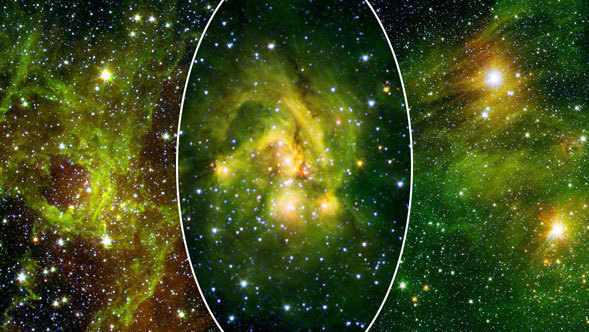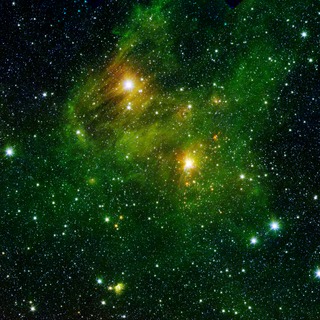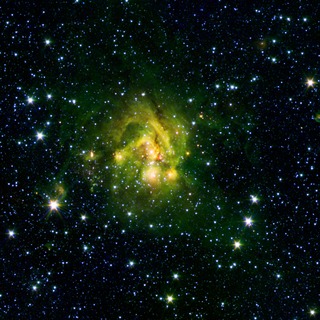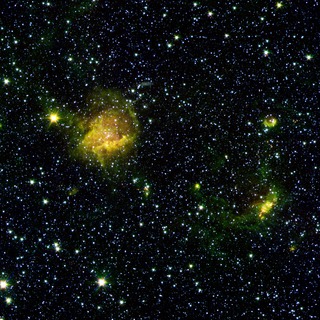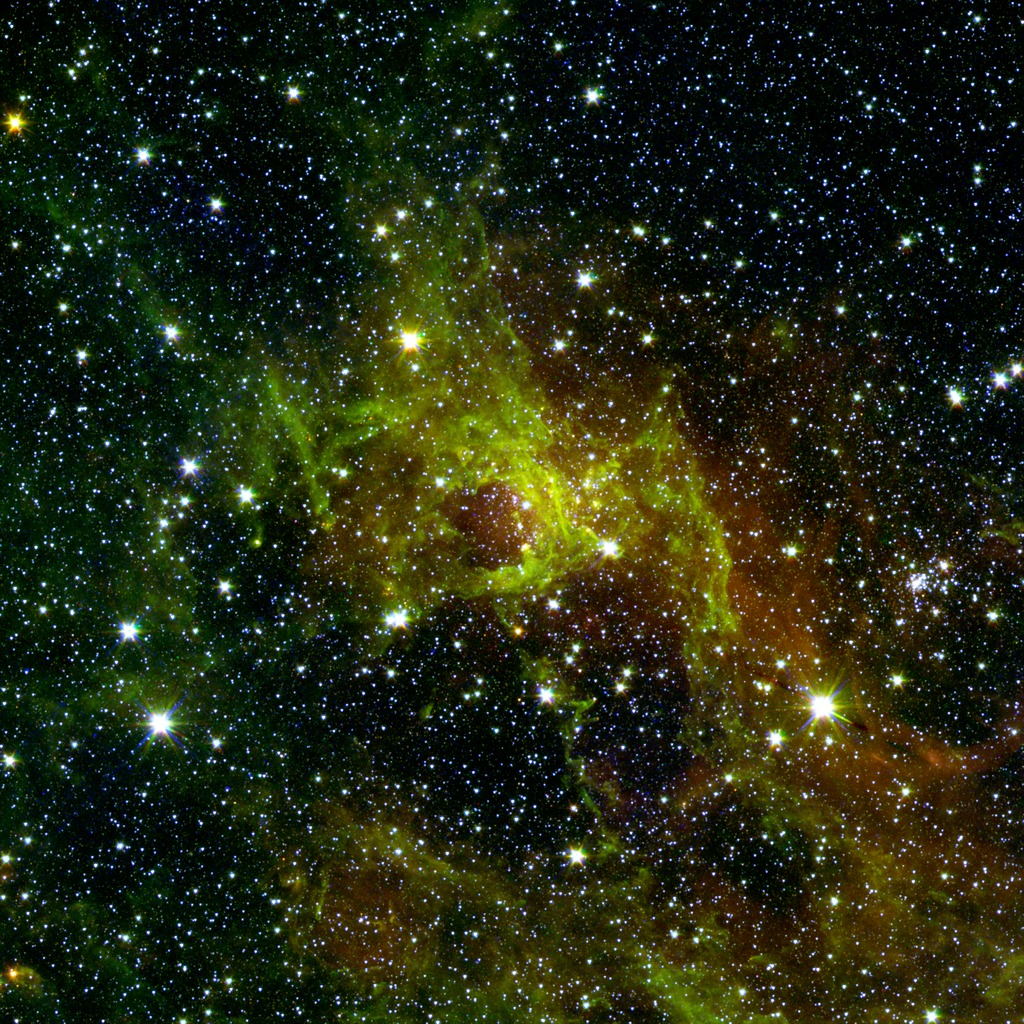
Credit: NASA/JPL-Caltech/2MASS/B. Whitney (SSI/University of Wisconsin)
Observation • July 28th, 2010 • sig10-016
sig10-016
This wispy, vast structure in the constellation Cygnus has a small bubble right in its center puffed out by the spasms of fresh-formed, heavyweight stars. A bubble far larger with age, down below it, has a tendril of gas sneaking across its mostly empty inner space. Along this dusty thread stars are budding at the ends of matter columns, much like the famous "Pillars of Creation" seen by the Hubble Space Telescope in the Eagle Nebula. To the middle right and out of the fray sparkles an older star cluster that has since thrown off its green shroud of PAHs, chemical compounds found in space and on Earth. Below this jewel-like collection, hydrogen atoms energized by starlight emit a rosy glow. This hue, common to many nebulae, also appears red to our eyes in visible light. The verdant PAHs signify neutral, less energized regions around this luminous hydrogen patch, and help researchers gauge the size and age of cosmic clouds.
This image is a combination of data from Spitzer and the Two Micron All Sky Survey (2MASS). The Spitzer data was taken after Spitzer's liquid coolant ran dry in May 2009, marking the beginning of its "warm" mission. Light from Spitzer's remaining infrared channels at 3.6 and 4.5 microns has been represented in green and red, respectively. 2MASS 2.2 micron light is blue.
About the Object
- Name
- CTB 102
- Type
- Nebula > Type > Star Formation
Color Mapping
| Band | Wavelength | Telescope |
| Infrared | 2.2 µm | 2MASS |
| Infrared | 3.6 µm | Spitzer IRAC |
| Infrared | 4.5 µm | Spitzer IRAC |
Astrometrics
- Position (J2000)
- RA =21h 12m 34.4s
- Dec = 52° 32' 50.6"
- Field of View
- 30.0 x 30.0 arcminutes
- Orientation
- North is 46.7° left of vertical
